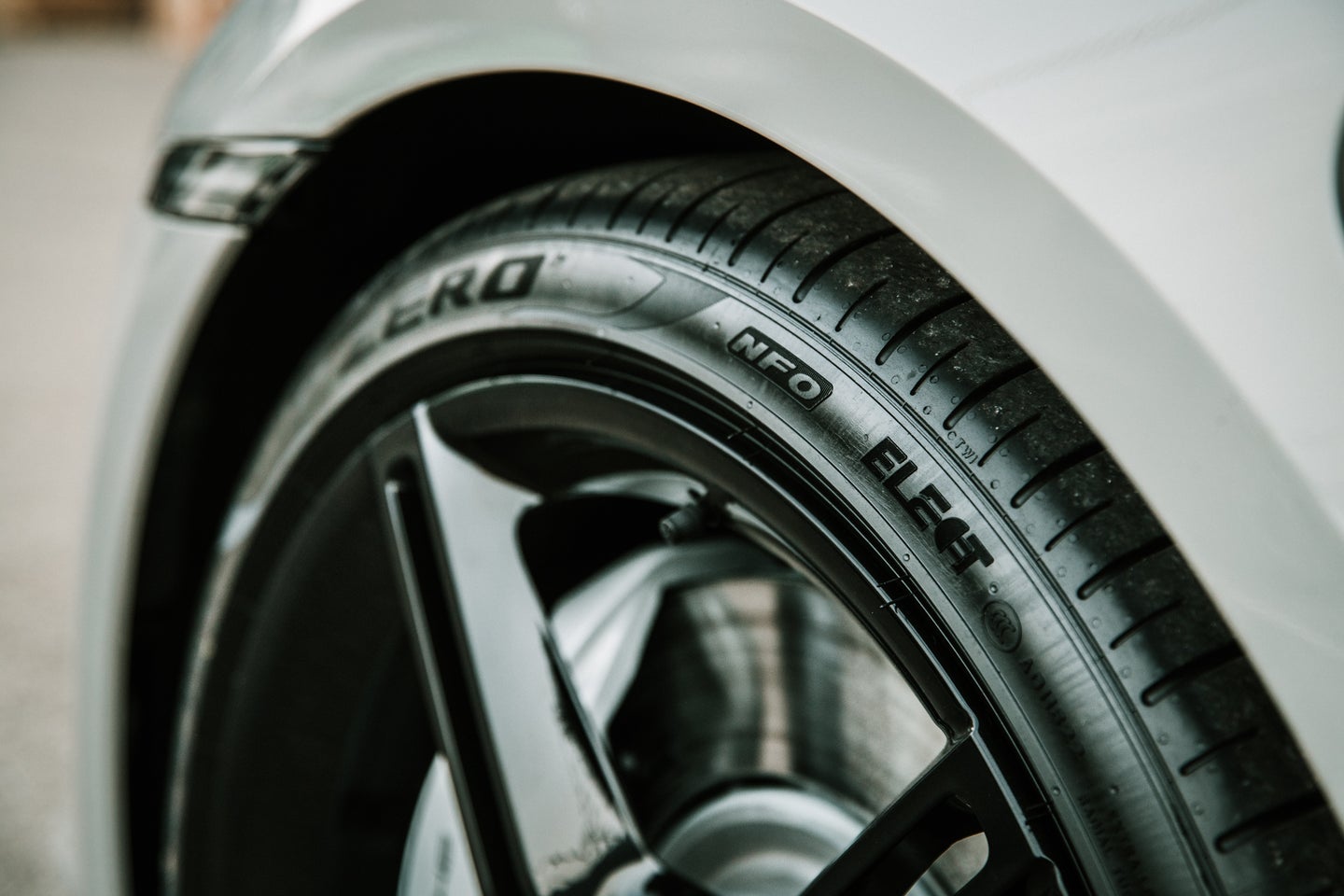
The electric vehicle spotlight is typically trained on range and charging speed, along with battery makeup and sustainable materials. However, EV news rarely gives enough credit to one unsung-but-critical factor: tires. EVs are heavier than their gas-powered cousins, and as a result, the electric motors generate more on-demand torque, which puts additional pressure on the vehicles’ rubber shoes. Tires made for EVs use special tread compounds and patterns and are engineered to take on the heavier components, as well as more torque strain.
Reducing tire drag
Companies like Pirelli, Goodyear, and Continental have actively ramped up research and development of tires designed specifically for EVs. Rolling resistance is an important aspect of tire construction for EVs, as it directly affects both range and ride quality. Continental Tires defines rolling resistance as “the amount of energy a tire uses over a defined distance.”
Reducing rolling distance requires a shallower tread depth and narrower footprint, along with harder tread compound and stiffer sidewalls. By decreasing tire “squirm,” or excess movement, EV-specific tires are designed to improve efficiency – or more aptly, to avoid losing energy.
“Rolling resistance coefficient is always the issue when designing for EVs,” Pirelli Chief Technology Officer Ian Coke told PopSci. “You have to understand the compromise between lowering the rolling resistance to match range and maximize performance. It’s a big challenge.”
Building from scratch
Two years ago, a two-woman team driving a pre-production Rivian R1T pickup truck competed in the Rebelle Rally, a grueling 1,500-mile off-road competition. The R1T had been in production for several years at that point, but testing it out in a tough desert environment at the rally laid bare its strengths and weaknesses. Emme Hall, the R1T driver, found one of those strengths to be the custom-designed Pirelli Scorpion all-terrain tires.
“The Scorpions are usually set to 48 [pounds per square inch] for street use, but I kept it around 35 psi most of the time, airing down to 20 psi when I hit the soft sand of Big Dune, Dumont Dunes and Glamis,” Hall wrote for CNET. “These Scorpions took everything I could throw at them without a hiccup.”
The key to a safer, more efficient, and quieter ride, Pirelli’s Coke says, is to create the tires for a new EV from the ground up. EV drivers tend to wear out their tires an average of 20 percent faster than those operating a traditional gas-powered vehicle, so using the same tires non-EVs do could cause a fair amount of hassle, as they must be more frequently exchanged.
“It’s very important to us that the tires we provide are tailored to the vehicle itself,” Coke said. “[A manufacturer] program starts at least three years before it’s launched. We’re designing the tires as the vehicle is being designed.”
[Related: As electric vehicles get bigger and faster, they also get more dangerous]
And those tires are built with a prescribed air pressure in mind for that particular vehicle. Altering that formula could cause skids, slides, and worse. Coke told Forbes that “while increasing air pressure in a tire does lower rolling resistance…it also reduces the tire’s ability to grip at the same time, which can be a dangerous trade in adverse conditions, when hard braking or when cornering loads push traction to the limit.”
What’s next?
Rivian isn’t the only EV maker with bespoke tires; some Tesla models and the new Volkswagen ID.3 wear original equipment tires formulated by Continental. There are countless other examples in the works or already on the market also.
For example, GMC’s Hummer EV rides on specially engineered 35-inch Goodyear Wrangler Territory tires made for both on- and off-road performance. While we know that GMC will introduce the Sierra EV pickup in 2023, we don’t know what kind of tires it will have. The brand has indicated that the new Sierra EV will include the same CrabWalk feature as the Hummer EV, a GMC-exclusive feature that syncs the turn and angle of the rear and front wheels, allowing diagonal movement of the vehicle at low speeds. That combination of movement and weight will certainly require rubber shoes that can handle the stress as well as those on the Hummer EV or Rivian R1T.
In the meantime, companies like Goodyear and Michelin are working toward the next EV frontier: airless tires. These types of tires use a unique system of spokes to support the outer ring instead of air, effectively eliminating flat tires Whether these can support EV heavyweights is still in question, but the sustainability factor is attractive, as airless tires require fewer replacements.
The post Heavy EVs need strong tires—which means reinventing their wheels appeared first on Popular Science.
Articles may contain affiliate links which enable us to share in the revenue of any purchases made.
from Popular Science https://ift.tt/RLQ4C91



0 Comments